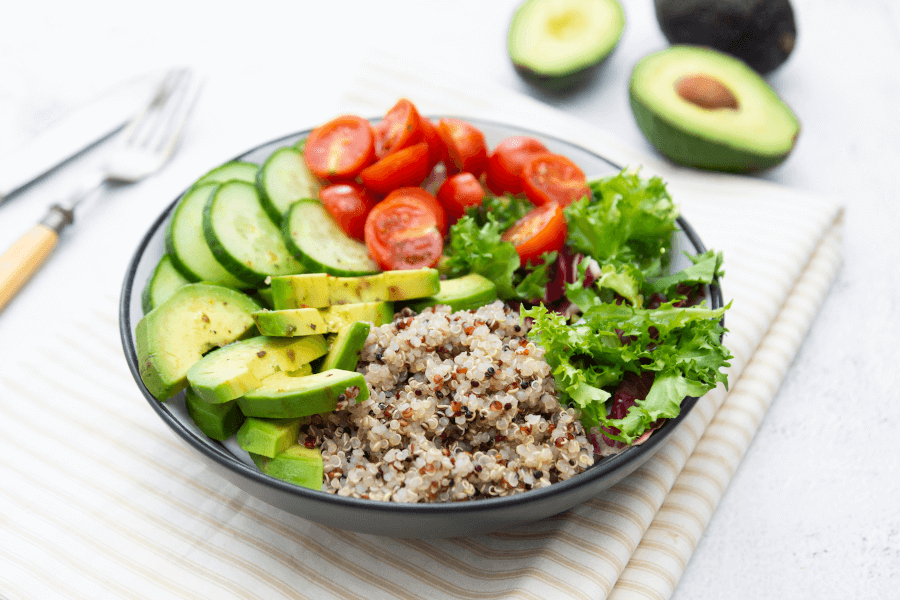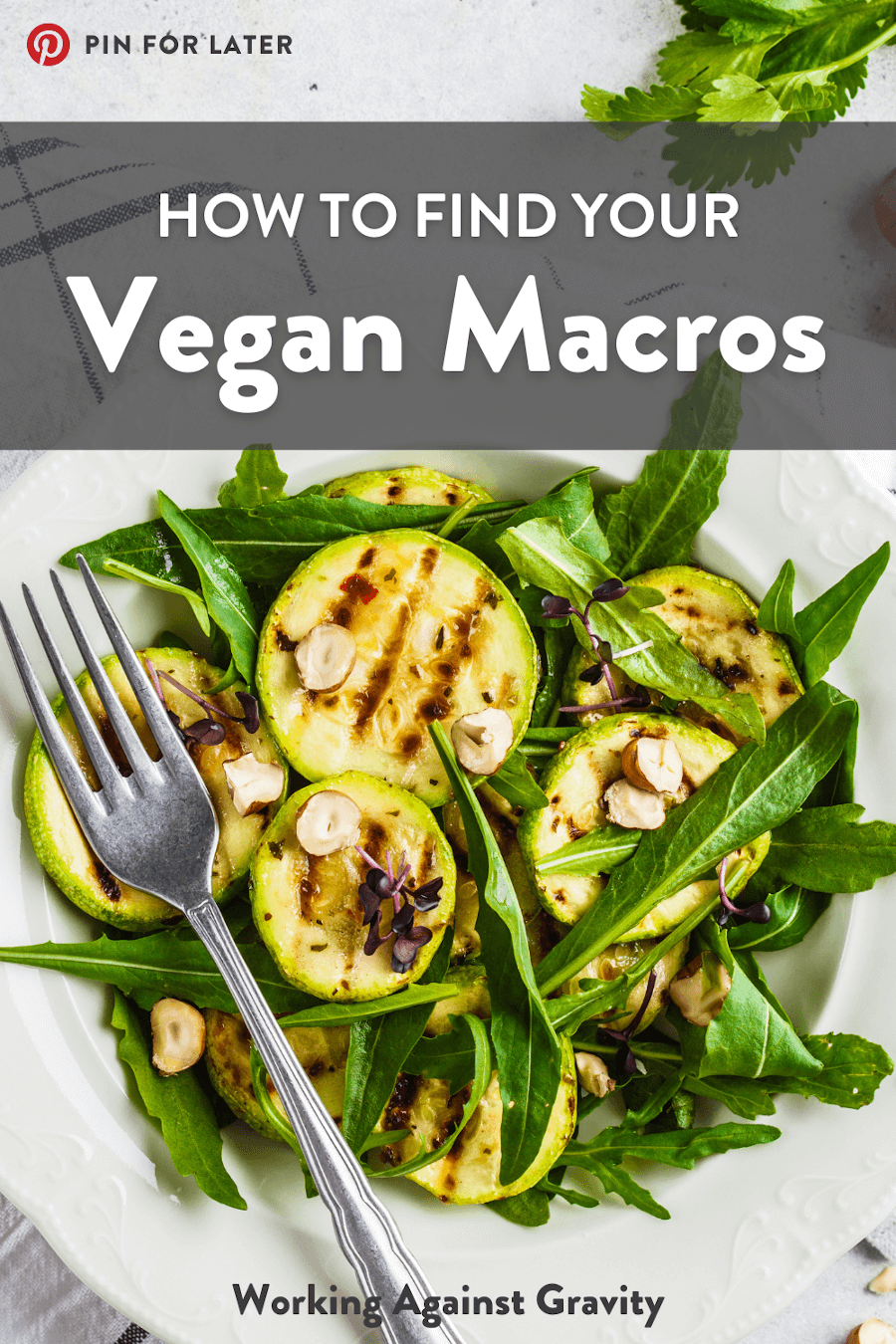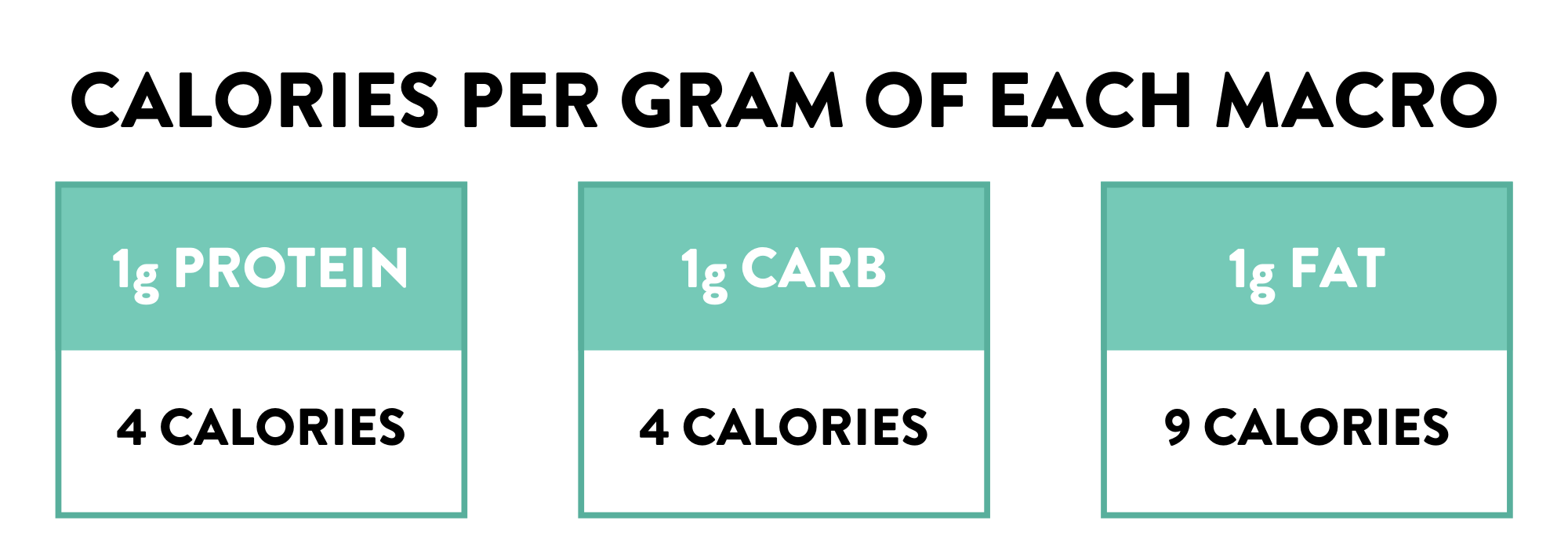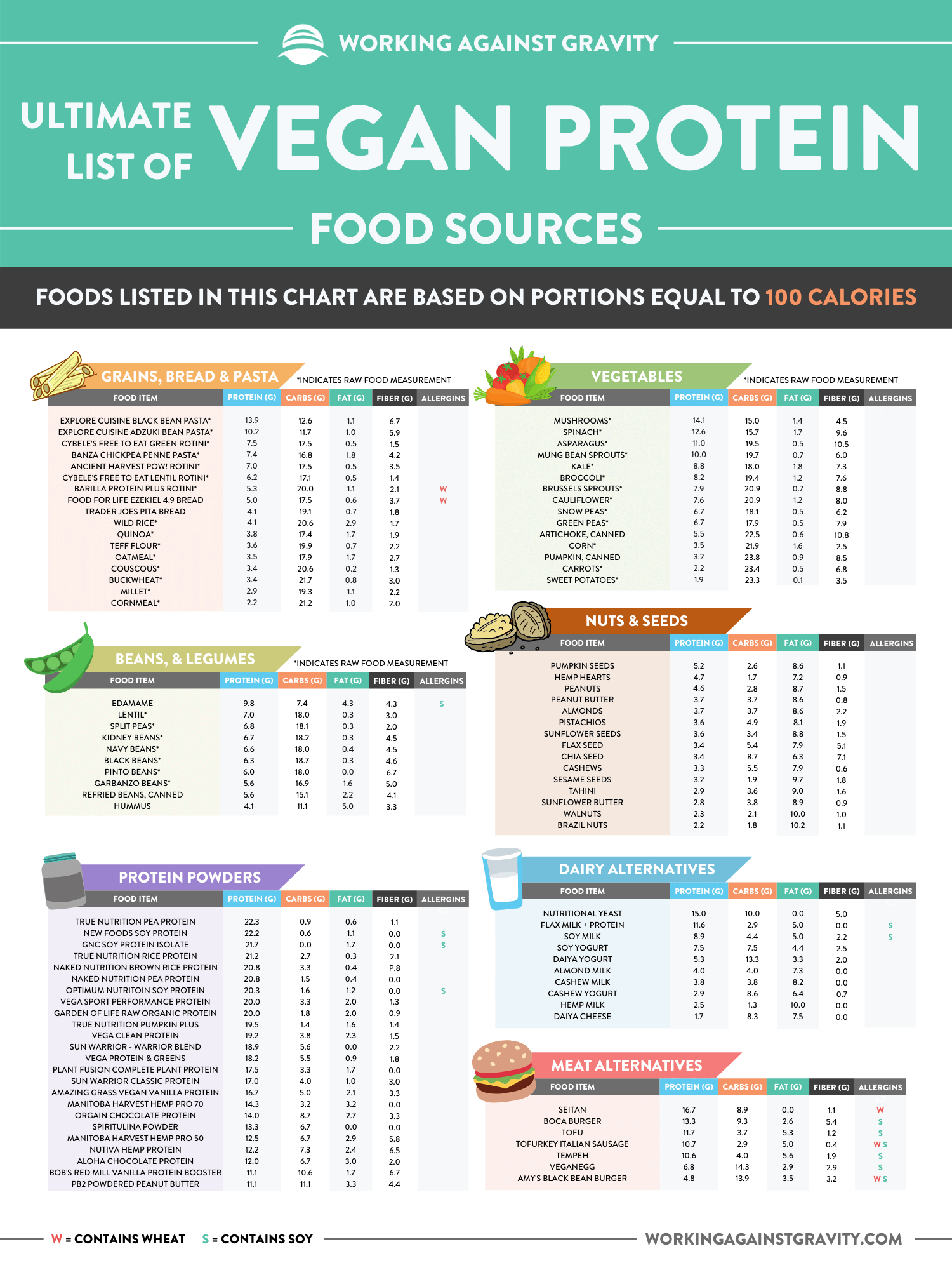
Whether you’re vegan for ethical, health, or dietary reasons, you should know some essential things to ensure you’re eating a well-balanced vegan diet, especially if you’re tracking macros.
A vegan diet (sometimes referred to as a “plant-based diet”) has the potential to be high in micronutrients and can support excellent health, body composition, and performance. Vegan foods can also be abundant at your local grocery store, making this eating style accessible to everyone.
But, to reap its full benefits, there are some considerations you need to make. In this article, we’ll outline what special macronutrient considerations to make if you’re eating a vegan diet, how to set your vegan macros, and share some of our favorite high-protein vegan foods.

What are Macros?
Macronutrients or 'macros' are the three nutrients required to fuel your body and maintain healthy functioning. The three macros are protein, carbohydrates (carbs), and fats. Each of these macros plays a unique and vital role in your body.
Protein is crucial for muscle growth and maintenance and recovery from workouts, day-to-day muscle stress, and even injury and illnesses [1,2]. With so many important roles, getting adequate protein is crucial for our longevity and reaching most body composition goals.
Advertisement
Protein intake is crucial to keep tabs on when you’re eating a vegan diet, as the most abundant and readily available form of protein comes from animal sources.
Carbs are your body's primary fuel source. Since carbs are essential to keep you fueled for your daily activities, your body has developed great energy storage systems. Carbs are broken down and stored as glycogen in your muscles. Plant-based carbs also contain a critical component—fiber—essential to digestive health, heart health, and more [3,4].
Like protein, fats are very versatile in their roles in our bodies. Dietary fats support healthy brain function, vitamin transport, and cardiovascular, hormonal, and joint health [5]. They’re also delicious and help you stay full and satiated.
How Do Macros Relate to Calories?
A calorie is a unit of energy; in nutrition, calories refer to the energy your body gains (your total caloric intake) through eating, digesting, and using the energy from your food. Each macronutrient has a corresponding calorie amount.

By consuming macronutrients, you’re consuming calories, and “counting macros” is a more detailed (and effective) way of “counting calories.”
Advertisement
How to Determine Your Caloric Needs and Macros
Determining your daily calories depends on many factors, including:
- Your weight
- Age
- Activity level (daily movement & exercise)
- Goals
… Among other things!
You’ll need to account for these factors when calculating your caloric needs.
Once you know how many calories you need to reach your goals, the next step is determining your macros if you’re following a vegan diet.
Macros for Vegans
If you want to improve performance, gain muscle, look lean, lose weight, or simply improve your general health, there are a few vegan-specific considerations you may need to make.
Advertisement
As you follow the steps in THIS ARTICLE to determine your calorie needs and set your vegan macros, start on the lower end of the protein suggestion (around .8g of protein per pound of body weight). Then, practice eating plant-based protein sources. As protein becomes easier to hit, you can increase this number.
You may also find that you need to keep your fat intake on the lower end of the suggested range (~25-35% of total calories) to allow for more calories from carbohydrates since many plant-based protein sources come with a higher carb content as well.
How to Get Protein as a Vegan
Protein is one of the three main macronutrients that make up the food you eat. Protein is an integral part of a healthy diet, along with carbohydrates and fats.
Protein makes up about 15-20% of your total body weight and is the main component of our muscles, skin, hair, eyes, and internal organs [6]. Proteins are large and complex molecules of various naturally occurring amino acid combinations.
Most people assume that eating a diet rich in dietary protein covers all health bases… but is it that simple?
Advertisement
Amino Acids
Knowing how to get adequate protein while following a vegan diet requires learning what is actually in protein.
20 amino acids combine to make different kinds of protein. Of those 20, seven are non-essential amino acids—your body makes them in high enough quantities that you don't have to rely on your diet to reach an adequate intake.
Four of the 20 amino acids are conditionally essential—your body can usually make enough. Still, there are some circumstances (sickness, nutrient deficiencies, intense training sessions, etc.) when your amino acid requirements increase, and your body needs extra help. In these cases, you’ll have to get these amino acids from your diet to achieve adequate intake.
The last nine amino acids are essential amino acids (EAAs). Your body cannot make these, so you have to get them from the foods you eat.
Bioavailability of Plant-based Protein vs. Meat-Based Protein
While relying on plant-based protein sources can provide the added benefit of a high-volume diet full of micronutrients (hello, veggies!). You may need to make some special considerations regarding your protein sources.
Advertisement
Plant-based protein sources are usually less bioavailable than animal-based sources [7]. So, your body cannot digest and absorb the amino acids as readily.
Another thing to consider is the amount of leucine in your protein sources. Leucine is an amino acid utilized in muscle protein synthesis—how you make and maintain muscle gains. There are lower quantities of Leucine in plant-based protein sources. So being mindful of plant sources with higher leucine is helpful if you want to maintain or build muscle.
Complete Proteins vs. Incomplete Proteins
Your protein sources contain different combinations and compositions of amino acids. Animal proteins (including poultry, fish, dairy foods, and eggs) are complete proteins because they have all essential amino acids.
Most plant-based protein sources are considered incomplete proteins (soy is the exception) as they do not contain all nine essential amino acids [8]. So, a plant-based diet must include a variety of protein sources to ensure adequate nutrient intake and a complete amino acid profile.
Complete Protein Combinations for Vegans
To achieve a complete protein, combine two or more incomplete protein sources or “complementary proteins” to get the nutrients and full amino acid profile you need for optimal health.
Advertisement
For example, brown rice only has a handful of the nine essential amino acids. Foods like beans, lentils, and chickpeas have essential amino acids that brown rice lacks. So by pairing the brown rice with beans, lentils, and chickpeas, you can achieve a delicious plant-based meal that’s also a complete protein!
Here are a few tasty combos to test out!
- Whole wheat pasta with peas and peanut sauce
- Lentil or bean soup and whole wheat crackers
- Black beans with brown rice or quinoa
- Peanut butter sandwich on whole wheat bread
- Spinach and arugula salad topped with seeds
- Oatmeal with pumpkin seeds
- Lentil soup with whole wheat pitas
You don’t have to eat complete proteins within the same meal; just make sure you consume a combination for the day. Eating various nuts, seeds, whole grains, and lentils throughout your day is the best—and least complicated—way to ensure your body gets the protein it needs.
High-Protein Foods for Vegans
When considering protein sources, keep tabs on:
- Health & nutrition data
- Level of processing - the higher the processing, the less frequently you might want to eat these foods
- Nutrient density - the higher the density, the more nourishing the food
- Palatability - these foods may override natural hunger cues & feelings of fullness
- Personal values & dietary preferences - allergies, environmental sustainability, etc.
Given the information above, your food spectrum and intake may look different than the suggestions below. Pick and choose what works best for you.
Advertisement
Here’s a list of high-protein foods for vegans:
- Tempeh
- Tofu
- Edamame
- Lentils
- Beans
- Split peas
- Black-eyed peas
- Tempeh bacon
- Soy yogurt
- Seitan
- Black bean burgers
- Veggie burgers
- Vegan protein powders
- Vegan protein bars
- Plant-based ‘meats’
- Nutritional yeast
Healthy Fats for Vegans
Dietary fats are an essential part of a well-rounded diet. Here are some vegan-specific fat sources to focus on:
- Avocado & guacamole
- Olives
- Olive oils
- Nut butter
- Coconut milk
- Chia seeds
- Pecans
- Almonds
- walnuts
- Flaxseed
- soybeans
Healthy Carbs for Vegans
Carbohydrates are the most accessible vegan foods to find, and we can break them up into different categories: grains, starches, fruits, and veggies.
Pro-tip: Choosing high-protein, low-fat carb sources will help you hit your macros with minimal frustration. Getting in protein where and when possible is vital, and a lower fat content allows you to add other delicious higher fat, higher protein foods to your routine.
Advertisement
Grains:
- Rice
- pasta/spaghetti
- Rice noodles
- Oats
- Rice crackers
- Wheat crackers
- Corn tortillas
- Couscous
- Cereal
- Pretzels
- Bread
Starches & Root Vegetables:
- Potato
- Sweet potato
- Yams
- Taro
- Yucca
- Beets
- Parsnips
- Turnips
- Plantains
- Squashes
Fruits:
- Apples
- Bananas
- Mango
- Berries
- Melons
- Grapes
- Pineapple
- Apple sauce
- Peaches
- Dried fruits
Vegetables:
- Mushrooms
- Spinach
- Asparagus
- Mung bean sprouts
- Kale
- Broccoli
- Cauliflower
- Brussels sprouts
- Snow peas
- Green peas
- Artichoke
Download this vegan protein source chart and keep it handy the next time you hit the grocery store.
Advertisement

The Big Picture
There are no "good" or "bad" foods. All foods exist on a spectrum. Some foods you want to include more often in your routine. Others, you need to be more mindful about.
Suppose you eat a vegan diet and have weight loss or performance-based goals. In that case, you must get a variety of healthy, high-protein carb and fat sources to keep your complete protein intake high.
A WAG Coach has your back if you need help building healthy protein habits, losing weight, and maximizing your performance while eating a vegan diet. We’ve guided many vegan clients through the ins and outs of building complete proteins, meal timing, and ensuring that your diet supports your goals and lifestyle. Join WAG today!
References:
- Yeung, S., Hilkewich, L., Gillis, C., Hein, J., & Fenton, T. (2017). Protein intakes are associated with reduced length of stay: a comparison between Enhanced Recovery After Surgery (ERAS) and conventional care after elective colorectal surgery. Am J Clin Nutr., 106(1), 44-41. Retrieved from https://pubmed.ncbi.nlm.nih.gov/28468890/
- Cooper, M. (2000). The cell: A molecular approach. 2nd edition. Sinauer Associates. EPUB https://www.ncbi.nlm.nih.gov/books/NBK9924/
- Mayo Clinic Staff. (2018). Dietary fiber: Essential for a healthy diet. Mayo Clinic Nutrition and Healthy Eating. Retrieved from https://www.mayoclinic.org/healthy-lifestyle/nutrition-and-healthy-eating/in-depth/fiber/art-20043983
- Vorvick, L. J., & Zieve, D. (2018). Fiber. MedLine Plus. Retrieved from https://medlineplus.gov/ency/article/002470.htm
- Mayo Clinic Staff. (2018). Dietary fat: Know which to choose. Mayo Clinic Nutrition and Healthy Eating. Retrieved from https://www.mayoclinic.org/healthy-lifestyle/nutrition-and-healthy-eating/in-depth/fat/art-20045550
- Wang, Z., Shen, W., Kotler, D., Heshka, S., Wielopolski, L., Aloia, J., Nelson, M. et al. (2003). Total body protein: a new cellular level mass and distribution prediction model. Am J Clin Nutr. 78(5), 979-984. Retrieved from https://academic.oup.com/ajcn/article/78/5/979/4677508
- Gaudichon, C., & Calvez, J. (2021) Determinants of amino acid bioavailability from ingested protein in relation to gut health. Current Opinion in Clinical Nutrition and Metabolic Care, (24)1, 55-61. Retrieved from (https://journals.lww.com/co-clinicalnutrition/fulltext/2021/01000/determinants_of_amino_acid_bioavailability_from.11.aspx
- Hoffman, J., & Flavo, M. (2004). Protein — which is best? J Sports Sci Med. 3(3), 118-130. Retrieved from https://www.ncbi.nlm.nih.gov/pmc/articles/PMC3905294/
Nicola Spencer
Schedule a Free Intro Call
Working Against Gravity has led the macro tracking and health space for over a decade. Our team doesn’t just understand the science of nutrition—we’ve spent years mastering the art of tailoring it to fit your life. That means no cookie-cutter plans, just real strategies that have worked for over 30,000 people.
Schedule a free call with our team to learn how working with a 1-on-1 WAG coach will help you reach your goals.



